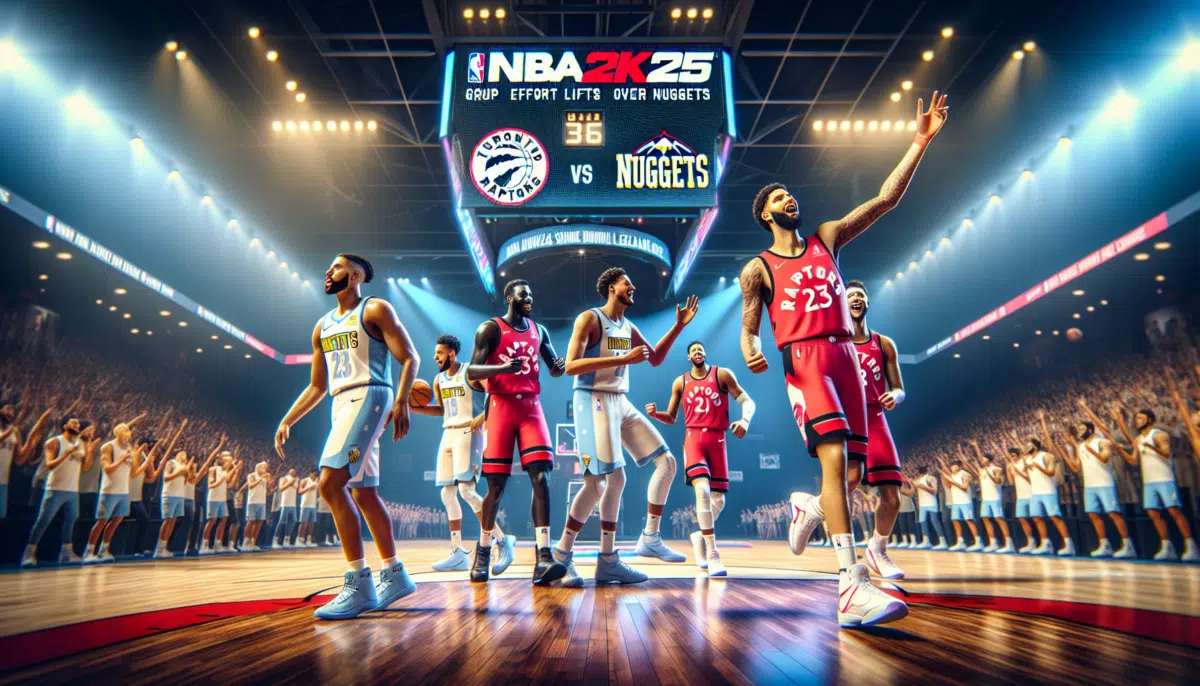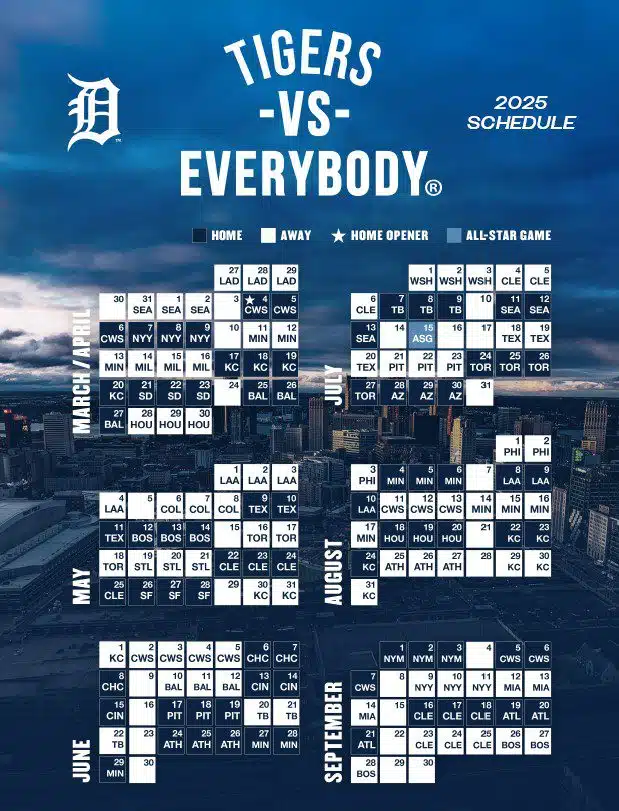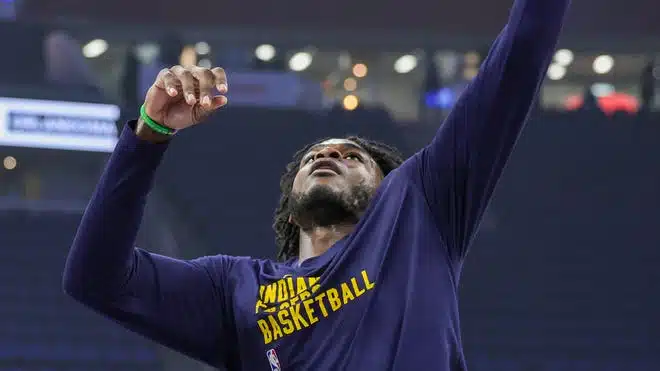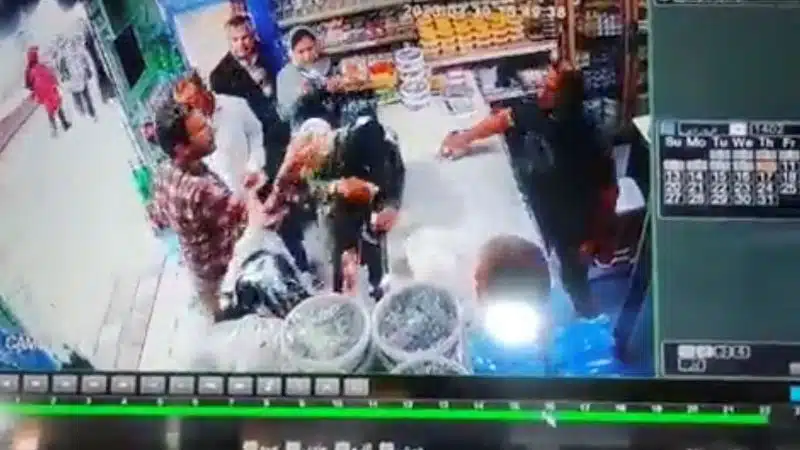“It may sound strange, but the stadium fell silent at that precise moment,” recollects former Manchester United defender David May.
“All that could be heard was the cracking sound of his leg snapping — like the collision of two shin pads — followed by the scream.”
He reflects on April 8, 1996, the day when Coventry City defender David Busst endured a horrific leg break at Old Trafford. For many, it remains one of the most visually shocking football injuries to be captured on camera.
With only four games left in the Premier League season, Manchester United held a six-point lead over Newcastle United having played one game more.
Coventry were a point away from safety, but they made an aggressive start that excited the few thousand away fans, earning a corner after only 86 seconds.
Ally Pickering’s cross found Noel Whelan at the near post, but his header was pushed into the air by the diving Peter Schmeichel.
Busst sprinted “full throttle” towards the rebound, with slim chances of winning it at best.
He was positioned 10 yards outside the far post but accelerated so fiercely that he reached the ball before the two United players, Denis Irwin and Brian McClair, who attempted to block the bouncing ball with their legs.
The collision caused the ball to just trickle towards the goal.
“Instinctively, I thought, ‘He should have scored there’,” May recounts.
“But then I saw his leg, and oh my God, it was horrifying. The pain David was in was evident. I turned away. Just recollecting it gives me chills.”
Schmeichel was on the ground with the ball in his grasp when he seemed to witness Busst “sit on his own leg.”
As the Danish goalkeeper looked up, he was met with a sight that would be etched into his memory forever.
Busst had suffered compound fractures to both his tibia and fibula, leaving his right leg bent at a shocking angle.
“Back then, we had five set-piece routines with Ron Atkinson and Gordon Strachan, and the one we executed was the flick-on at the near post, with me coming in at the back post. It worked perfectly until I got challenged,” explains Busst, who currently works for Coventry’s Sky Blues In The Community charity, speaking to The Athletic.
“I froze. I had a sense that something was off. I thought, ‘Don’t move, and the pain will fade away,’ but it didn’t. I was afraid to move as Dion Dublin had a look of sheer horror on his face.
“Irwin was moving off the post towards me and caught me above the ankle, while McClair was coming from behind and his foot hit me higher up the shinbone. All three of us were aiming to win or block the ball, so I don’t hold anyone to blame.
“When you have two opposing forces colliding at that exact split second, only one outcome can occur. It’s probably an incident that will never repeat itself.”
Manchester United and Coventry will face off in Sunday’s FA Cup semi-final, a fixture not seen in the Premier League since 2001, but forever linked to the nine-minute stoppage that marked the end of Busst’s career.
“I knew something was really wrong judging by the sound he made, but when I saw Bussty’s hand raised in the air, that confirmed it for me,” says Paul Williams, a Coventry teammate who had traveled with close friend Busst to meet the team bus that morning.
“Everyone was in their own world when he was down. I don’t think two people spoke to each other in our team.
“I can’t recall a single pass I made that day. I wouldn’t even be able to tell you the final score.”
United won 1-0, with Eric Cantona scoring the lone goal two minutes into the second half.
The specifics of that day remain hazy for those who shared the field, including Manchester United midfielder Lee Sharpe, who heard the “crack” from just outside the box.
“Playing on was dreadful,” Sharpe recounts. “No one wanted to get close to anybody. It was a strange atmosphere, as I think everyone was in shock.
“I recall Pete (Schmeichel) tossing a bucket of water on the blood on the pitch and seeing it splatter red.”
In 1996, the basic setup at football grounds meant both club doctors had to sit in the directors’ box, and paramedics had to remain in the tunnel at the Stretford End and were not permitted on the pitch for treatment.
The incident was so unheard of that United’s players called for their physio, David Fevre, to intervene.
“Our guys signaled to us and said, ‘Dave, you need to handle this’,” recounts Fevre.
“When I reached him, David was screaming in agony, so my initial thought was, ‘I need two reliable players to assist me here’. Dion Dublin and ‘Choccy’ (McClair) engaged with him to ease the tension for me and create a barrier so he couldn’t see down.”
By the time Fevre arrived, Busst’s bone had protruded through the skin, causing a pool of blood in the six-yard box.
His immediate focus was on stemming the bleeding and preventing Busst from losing consciousness or encountering further complications. He ensured that any grass and debris were cleaned by rinsing the open wounds with saline and then dressing them to absorb the blood.
Only then could he address the fracture itself.
“His leg was almost at a 90-degree angle,” Fevre states.
“Due to the angle, I checked the distal pulses in the foot. Losing those could cut off the blood supply to the leg, presenting an even larger issue.
“I opted to keep the limb in that position to preserve those pulses. I supported both ends of the fracture as we transferred him onto the stretcher and maintained that stability as we carried him around the pitch into the tunnel for the paramedics to administer oxygen.”

In this image, cropped because of the horrific nature of the leg fracture, David May, left, and other players react to David Busst’s injury (PA Images via Getty Images)
OnlyThe St John’s Ambulance service was not available at the time, so Fevre had to handle a challenging situation on his own. He mentors at the Football Association and is familiar with Busst’s type of injury as it is common.
Fevre shares his experience, mentioning that working in rugby league for a decade prepared him for handling such injuries. Despite the severity of the situation, he focused on the game, knowing that anything could happen at any moment.
The aftermath of Busst’s injury left the field in a poor state, requiring the groundsman to step in with water and sand. Referee Dermot Gallagher, still haunted by the incident 27 years later, had difficulty revisiting Old Trafford after the event.
Busst underwent a series of complicated medical procedures, including ten operations in twelve days to address infections and injuries, such as a hematoma and tendons requiring removal. He faced challenges with infections and a lack of blood supply to the injured area.
The road to recovery was long and arduous for Busst, involving surgeries, skin grafts, and the insertion of a metal pin in his leg. Despite multiple setbacks, Busst remained positive and focused on his rehabilitation.
The injury marked the end of Busst’s professional football career. Despite the devastating outcome, he remains resilient and grateful for the opportunities that emerged post-injury. Busst has since transitioned to coaching and continues to be involved in football through veterans’ leagues.
Busst’s unwavering determination and positive outlook have inspired those around him. Despite the challenges he faced, he found closure and new beginnings through coaching and mentoring.
Schmeichel, who witnessed the injury firsthand, acknowledges the profound impact it had on him and how it forged a connection with Busst. The incident remains etched in his memory, highlighting the lasting impact of such traumatic events in sports.






